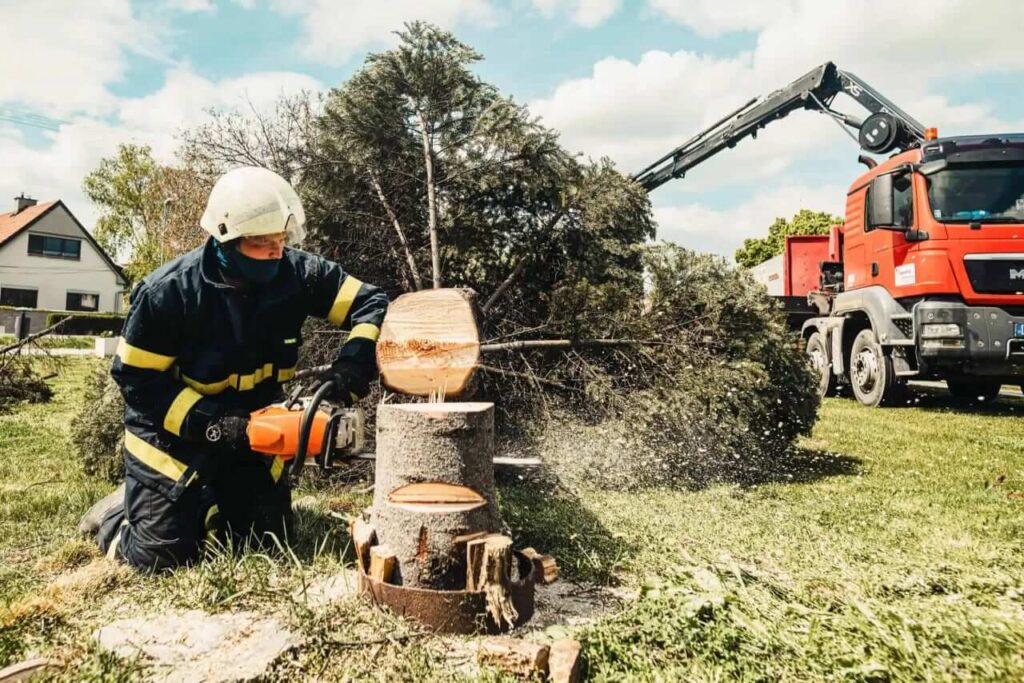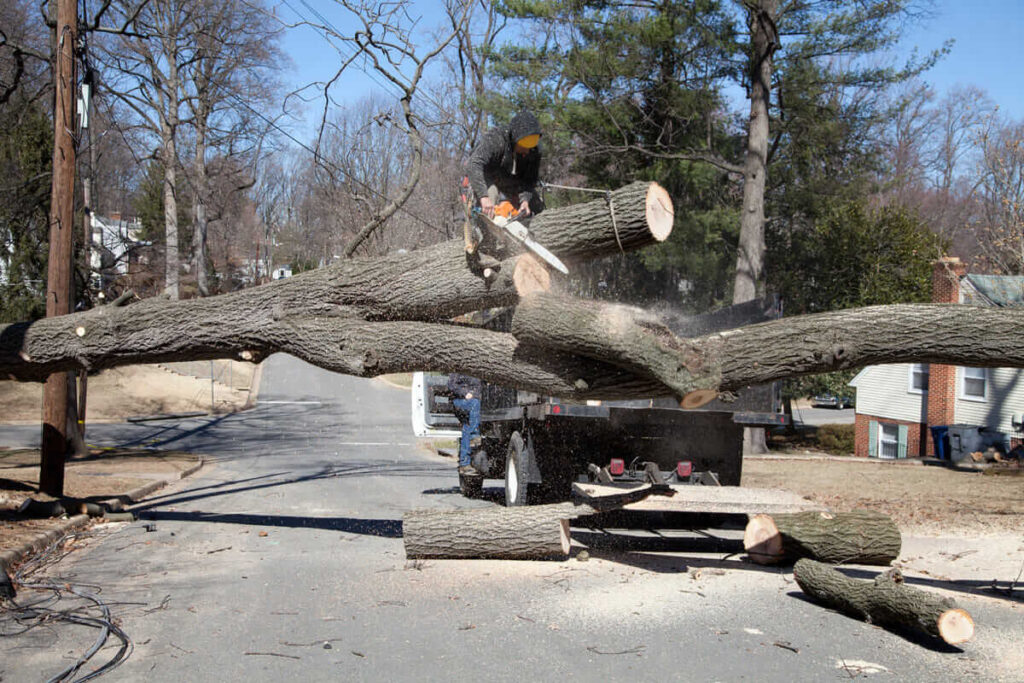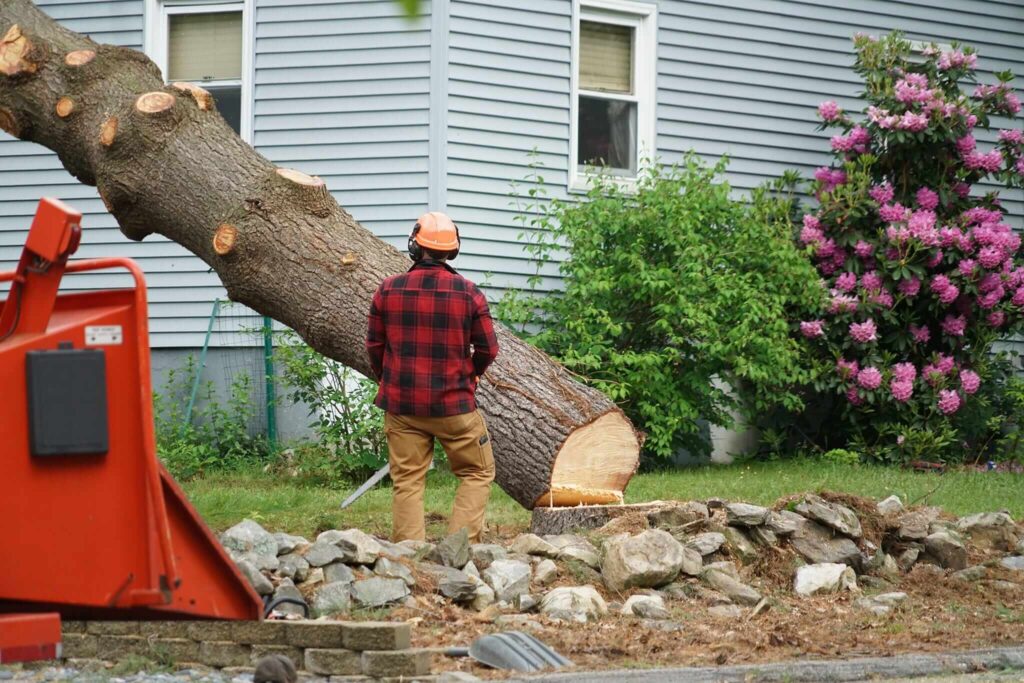Land clearing and tree removal are essential tasks for property development, landscaping, and managing land for agriculture or construction. However, these processes involve more than simply cutting down trees and clearing brush. Ensuring the process is carried out safely and efficiently requires careful planning, the right tools, and, often, professional expertise.
In this guide, we’ll explore the best practices for safe and efficient land clearing and tree removal. We’ll cover the essential steps, tools, safety considerations, and tips for homeowners and property developers alike.
Table of Contents
- Why Land Clearing and Tree Removal Are Necessary
- Planning Your Land Clearing Project
- Best Practices for Tree Removal
- Safety Precautions for Land Clearing and Tree Removal
- Tools and Equipment You Need
- Hiring a Professional Tree Removal Service
- Environmental Considerations in Land Clearing
- Conclusion: Ensuring Efficiency and Safety
1. Why Land Clearing and Tree Removal Are Necessary
Land clearing is often the first step in preparing a site for construction, farming, or landscaping. It involves removing trees, shrubs, rocks, and debris to create a usable and manageable space. Tree removal, on the other hand, focuses on removing specific trees, either due to health concerns, aesthetic reasons, or because they pose a hazard.
Clearing land and removing trees can improve the usability of a property, prevent accidents from falling trees, and enhance the aesthetic appeal of a landscape. Additionally, removing diseased or dead trees can protect the health of surrounding vegetation. Learn more about how to achieve healthy and aesthetically pleasing hedges.
2. Planning Your Land Clearing Project
Proper planning is crucial for the success of any land clearing or tree removal project. Without a clear plan, the process can become inefficient and even dangerous.
Steps to Plan Land Clearing:
Assess the Land:
Before starting, walk through the property and identify the trees and vegetation that need to be removed. Take note of any trees near buildings or power lines, as these may require special handling.
Permits and Regulations:
Depending on where you live, land clearing and tree removal may require specific permits. Check with local authorities to ensure compliance with regulations, especially in environmentally sensitive areas.
Identify Boundaries:
Knowing your property lines is essential to avoid disputes with neighbors and ensure you don’t accidentally clear land you don’t own.
Set Goals:
Define your purpose for clearing the land. Are you preparing for construction? Landscaping? Farming? Different goals may require different approaches.
If your land includes significant tree coverage, you may want to prioritize professional tree removal services to handle large trees safely and efficiently.

3. Best Practices for Tree Removal
Tree removal is a complex process that requires careful consideration of safety, efficiency, and the impact on the surrounding environment. Whether you’re tackling small trees yourself or hiring professionals for larger jobs, following these best practices is essential.
Assessing Tree Health
Before removing a tree, assess its condition. Dead or diseased trees are more likely to fall during removal, posing risks to people and property. Healthy trees, while easier to remove, can still be tricky depending on their size and location.
Steps for Safe Tree Removal:
- Clear the Area: Ensure there is no one in the vicinity of the tree’s falling path.
- Cutting in Sections: For large trees, it’s best to cut the tree in sections, starting from the top. This minimizes the risk of damage to surrounding property.
- Using the Right Tools: Chainsaws, wedges, and ropes are essential for safe and effective tree removal. Make sure to have the proper tools for the size of the tree you’re removing.
- Stump Removal: After felling a tree, the stump remains. Stump grinding is a common method to remove it completely and prevent regrowth.
4. Safety Precautions for Land Clearing and Tree Removal
Safety should be the number one priority when clearing land or removing trees. Even small mistakes can lead to severe injuries or damage. Below are essential safety precautions:
- Wear Protective Gear: Always wear a helmet, gloves, eye protection, and sturdy footwear.
- Inspect Tools and Equipment: Check all tools before use to ensure they’re in good working condition. Chainsaws, in particular, need regular maintenance.
- Plan the Fall: Before cutting a tree, plan its fall direction to avoid damaging nearby structures or vegetation.
- Work with a Partner: It’s always safer to work with someone who can assist in case of an emergency, especially when dealing with larger trees.
5. Tools and Equipment You Need
The right tools can make land clearing and tree removal much safer and more efficient. Here are some essential items you’ll need:
- Chainsaw: A high-quality chainsaw is indispensable for cutting down trees and large branches.
- Stump Grinder: This is used to remove tree stumps after cutting down a tree.
- Axes and Handsaws: Ideal for smaller trees and shrubs.
- Ropes and Wedges: These tools are critical for safely guiding a tree’s fall and managing larger branches.

6. Hiring a Professional Tree Removal Service
In many cases, hiring a professional tree removal service is the safest and most efficient option. Professionals have the expertise, tools, and experience to remove trees without causing damage to your property or injuring anyone.
Benefits of Hiring a Professional:
- Safety: Experienced professionals can handle large or hazardous trees that you may not be equipped to deal with.
- Efficiency: Professionals can complete the job faster and with less hassle.
- Proper Disposal: Tree removal companies often handle the disposal of trees and debris, saving you the effort.
When hiring a service, be sure to check their credentials, insurance, and reviews to ensure you’re getting the best quality service.
7. Environmental Considerations in Land Clearing
While land clearing is often necessary, it’s important to do so in an environmentally responsible manner. Over-clearing land can lead to soil erosion, habitat destruction, and a loss of biodiversity.
Tips for Environmentally Friendly Land Clearing:
- Selective Clearing: Remove only the trees and vegetation that are necessary for your project, leaving other plants intact to maintain ecological balance.
- Erosion Control: After clearing, take steps to prevent soil erosion by planting ground cover or installing barriers.
- Recycling Wood: Consider recycling the wood from felled trees. Wood chips can be used for landscaping, and logs can be repurposed for firewood.
8. Conclusion: Ensuring Efficiency and Safety
Land clearing and tree removal are crucial tasks for many property development and landscaping projects, but they should be approached with care and planning. By following the best practices outlined in this guide—whether it’s selecting the right tools, prioritizing safety, or hiring a professional—you can ensure a smooth and efficient process.
Remember, each project is unique, and careful planning tailored to your specific property will lead to the best results. Prioritize safety, respect the environment, and use professionals when necessary to make sure your land clearing and tree removal go smoothly.

